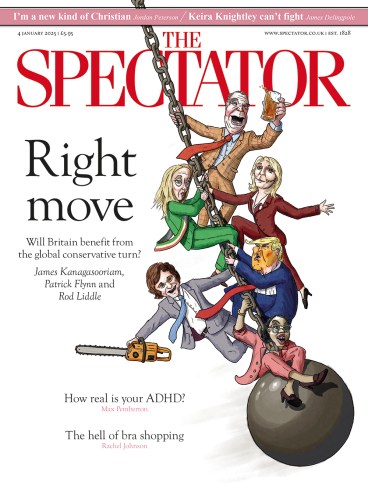
On Christmas Day, 12 million people watched the will-they-won’t-they couple Smithy and Nessa finally marry after 17 years in the finale of the hit BBC comedy series Gavin and Stacey. Yet for all the cheery sentiment, it’s a depressing thought that – statistically – in the real world the characters would be earning roughly the same amount at the series’ end in 2024 as they were at its beginning in 2007.
Rachel Reeves’s task this year is to spring Britain from its low-growth trap. The early signs are not encouraging. Those captains of industry whom she once so assiduously courted are turning hostile. The Confederation of British Industry says private sector expectations are at their lowest since Liz Truss’s ‘mini-Budget’ fiasco. The Bank of England predicts 0 per cent growth for the Chancellor’s first six months. Gleeful Tories talk about a ‘Reevescession’ that is ‘made in Downing Street’.
Reeves’s allies argue that much of the criticism is unfair. After 14 years of anaemic Tory rule, they say, Reeves’s invidious position is not of her own making. Some partisans echo Jim Callaghan, another Labour chancellor bruised by capital: ‘Because of the prejudices of the City,’ he grumbled, ‘the Labour government always has to do rather more.’
Some of Reeves’s critics say she has been too willing to follow ‘Treasury orthodoxy’. Successive ministers at the Treasury have been offered, and declined, the option of cutting winter fuel and agricultural relief. Yet Reeves accepted, sparking a backlash disproportionate to how much the change will save.

Magazine articles are subscriber-only. Keep reading for just £1 a month
SUBSCRIBE TODAY- Free delivery of the magazine
- Unlimited website and app access
- Subscriber-only newsletters








Comments
Join the debate for just $5 for 3 months
Be part of the conversation with other Spectator readers by getting your first three months for $5.
UNLOCK ACCESS Just $5 for 3 monthsAlready a subscriber? Log in